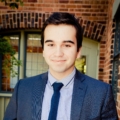This website uses cookies so that we can provide you with the best user experience possible. Cookie information is stored in your browser and performs functions such as recognising you when you return to our website and helping our team to understand which sections of the website you find most interesting and useful.
Figure 3: Rubicon – Rab7 binding colocalization [FINAL] Creators
Output Details
Description
Figure 3. pRAB7A binding preferences dictate subcellular localization. (A) WT HeLa cells expressing untagged Parkin were transfected with mCherry labelled, full-length Rubicon, and then immunofluorescence was performed using general and pS72-specific RAB7A antibodies alongside an Alexa 488 secondary antibody. Rubicon-RAB7A colocalization was examined under rich conditions, and Rubicon-pRAB7A was quantified following 1 H depolarization with 10 μM CCCP. Insets are digitally expanded images, 3.7 μm wide. (B) Line scans indicated in RAB7A (left) and pRAB7A (right) imaging trials. Each point on the line scan was baseline subtracted, and then normalized to the maximum signal on the line scan for each channel. (C) Colocalization was calculated as the above-threshold Mander’s colocalization coefficient representing the fraction of Rubicon-positive pixels that are also RAB7A/pRAB7A positive. For each experiment, ~20 cells were analyzed in this way (transparent markers), and then the average of these 20 measurements constitutes one biological replicate (solid markers). The average of 3 biological replicates is represented by the horizontal bar marker. The p statistic was calculated using a one-tailed, paired T test comparing average colocalization fractions measured on the same day. (D) Confocal bead-binding assay, conducted as in Figure 2D. Amylose beads were incubated with either MBP-Rubicon RH or Mutant MBP-Rubicon RH N821K, T911R, K916R. (E) Quantification of panel D. Briefly, an ROI was defined on the edge of a bead to be analyzed, and the maximum pixel value in the ROI was recorded as the brightness of the bead. Each condition consists of 3 independent experiments in which the brightness of ~20 beads was measured and averaged. Error bars indicate standard deviation of these independent experiments.
Identifier (DOI)
10.5281/zenodo.10896130


